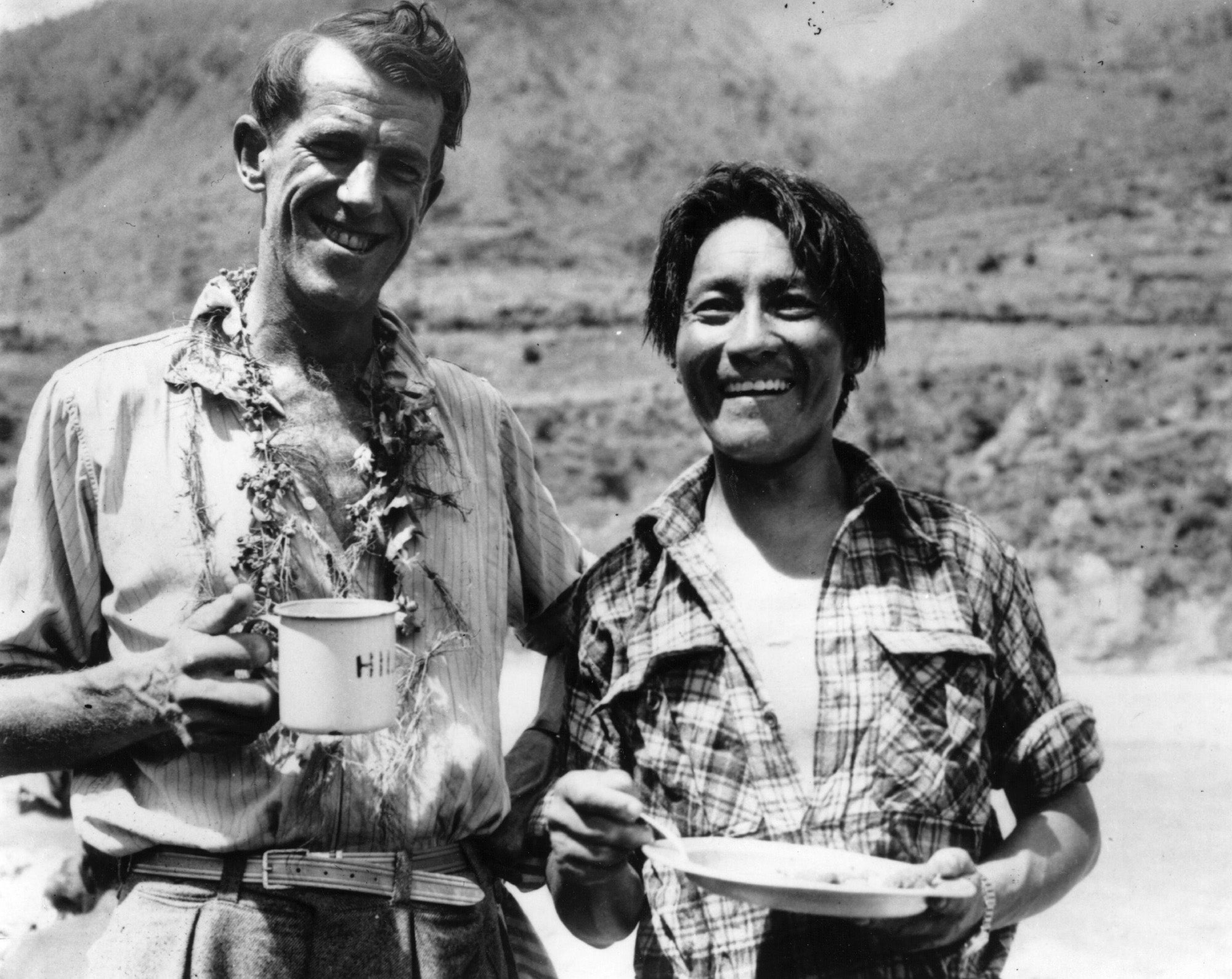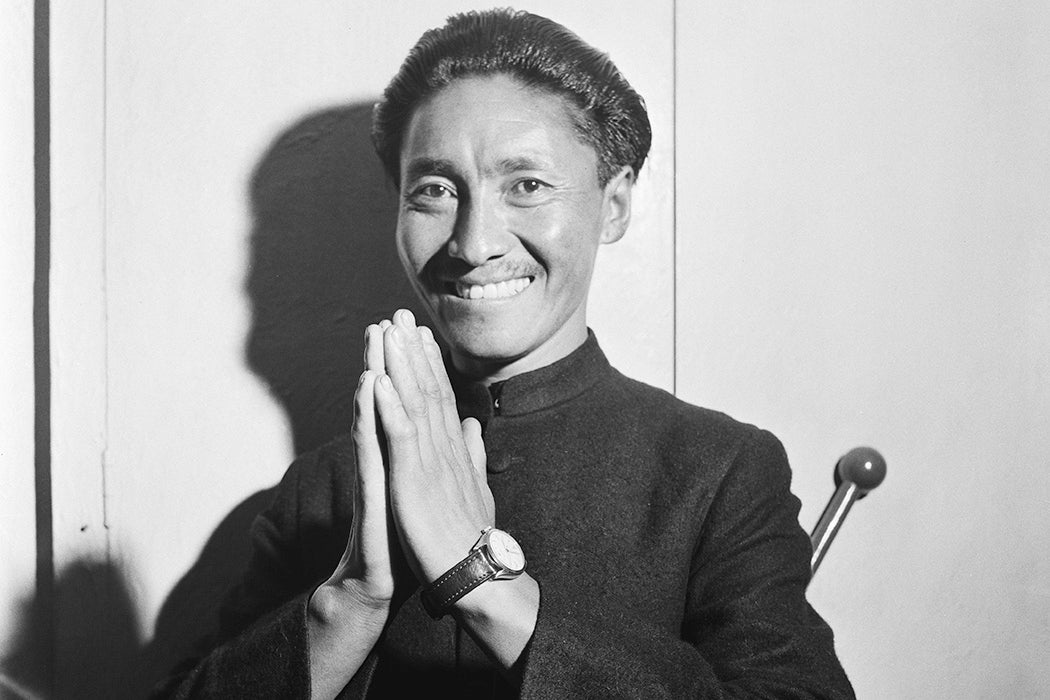It’s May 28, 1953, and two men are standing at the top of the world. One, a farmer from New Zealand called Edmund Hillary, reaches out his hand in a formal gesture of congratulations. The other, known as Tenzing Norgay, a Sherpa with an infectious smile, pulls him in for a hug. They’re the first people ever to stand on this ridge, which soars 29,031 feet above sea level (according to the latest measurement). Tibetans and Sherpas call the mountain Chomolungma, usually translated as “Mother Goddess of the Earth.” The former British empire (of which Hillary was a citizen) calls it Mount Everest.
After the expedition, both men became heroes. Arguably Hillary received more credit—despite the fact that Norgay had attempted to climb Everest on five previous expeditions and his first-hand knowledge was fundamental to their success. The forty-foot vertical rock just below the summit is still called the Hillary Step. In 1995, it was Hillary who received the British Commonwealth’s highest honor, becoming a Knight of the Garter, while Norgay received the far less highly ranked George Medal.
Throughout his life, Norgay remained an enigmatic figure. In a 1986 interview, Hillary described him as
a charming, rather quiet person; someone who would listen to what you had to say, who was not dogmatic. In other words, an almost self-effacing sort of personality—which didn’t seem to go with the great climber he had obviously become.
Some details of Norgay’s life remained shrouded in mystery until well after his death that same year. Although he spoke six languages, he was illiterate, and his autobiography, Tiger of the Snows, was heavily edited by ghost writer James Ramsey Ullman. The book implies Norgay was born in 1914 to Sherpa parents in the Nepalese village of Tame, but many later accounts (including Touching My Father’s Soul, a book co-written by Norgay’s son, Jamling) suggest he actually hailed from the Kharta Valley, Tibet.

Why the mystery? Although his parents did migrate to the Tame Valley to herd yaks in the 1920s, neither parent had Sherpa blood. It’s likely they faced discrimination from locals. One theory even suggests Norgay, the eleventh of thirteen children, was sold to a Sherpa family as a servant and perhaps deliberately clouded his roots fearing further prejudice.
Weekly Newsletter
The 1940s and ’50s were a time of vast geopolitical shifts in South Asia. Numerous powers—the Chinese Communist regime which invaded Tibet in 1950, Jawaharlal Nehru’s India, Nepal—recognized Norgay as a powerful symbol of national pride and fought to claim him as their own. However, as Peter H. Hansen describes, Norgay’s recorded interviews in his broken English suggest that his own understanding of identity was more humanistic, stretching far beyond legislative notions of nationhood:
Some people say I Nepali some say Indian. My sisters my mother living here [Nepal]. But now I live India with wife daughters. For me Indian Nepali same. I am Nepali but I think also Indian. We should all be same—Hillary, myself, Indian, Nepali, everybody.
Becoming a national hero was certainly not a motivating factor for the most famous Sherpa of all time (who was probably not a Sherpa at all). An obituary published in The Geographical Journal described the summit of Everest as “a triumph for mankind, rather than of two men.” However, as quoted by Hansen, Norgay himself saw it as a spiritual act born during a childhood spent in the shadow of Everest:
Then I sit think what lamas at Thyangboche say. They say Buddha god live there on top and they make worship to mountain. I have feeling for climbing to top and making worship more close to Buddha god. Not same feeling like English Sahibs who say want “conquer” mountain. I feel more making pilgrimage.
When he reached the summit, Norgay said a prayer, made an offering, and planted a string of flags (for Britain, Nepal, India, and the United Nations) in a spot that looked down on Tibetan soil. In his autobiography, he avoided specifying the religion from which he took the prayer or the order in which he planted the flags. When one is on the summit of the world’s greatest mountain, those divisions appear somewhat small.
Support JSTOR Daily! Join our new membership program on Patreon today.







